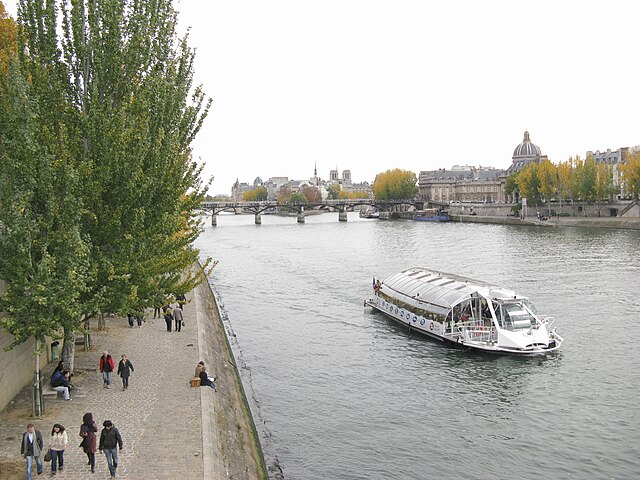Water privatization is short for private sector participations in the provision of water services and sanitation. Water privatization has a variable history in which its popularity and favorability has fluctuated in the market and politics. One of the common forms of privatization is public–private partnerships (PPPs). PPPs allow for a mix between public and private ownership and/or management of water and sanitation sources and infrastructure. Privatization, as proponents argue, may not only increase efficiency and service quality but also increase fiscal benefits. There are different forms of regulation in place for current privatization systems.
Graffiti against the closure of a public fountain and privatization of water in Turnhout, Flanders.
The Hampton water works serving London were part of the assets sold in 1989 as part of the privatization of water supply in England.
The water supply of Paris was operated by two private companies from 1985 to 2010, each serving one half of the city.
The water supply of Barcelona has been managed by a private company, Aguas de Barcelona, since 1867.
Water supply is the provision of water by public utilities, commercial organisations, community endeavors or by individuals, usually via a system of pumps and pipes. Public water supply systems are crucial to properly functioning societies. These systems are what supply drinking water to populations around the globe. Aspects of service quality include continuity of supply, water quality and water pressure. The institutional responsibility for water supply is arranged differently in different countries and regions. It usually includes issues surrounding policy and regulation, service provision and standardization.
A girl collects clean water from a communal water supply in Kawempe, Uganda.
Engine room of municipal water works in Toledo, Ohio, 1908
1880s model of pumping engine, in Herne Bay Museum
Cape Town water crisis warning, July 2018








